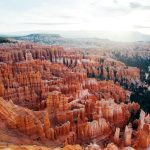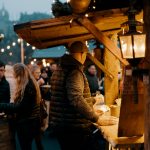Overview of Scottish Borders Festivals
Local festivals act as vital threads, weaving the communities of the Scottish Borders into a tapestry of rich heritage and vibrant gatherings. They help foster community engagement by creating occasions where individuals come together to celebrate shared traditions, enhance social ties, and preserve cultural identities over generations. These festivals play a fundamental role in both cultural preservation and personal connection.
While festivals like the famous Borders Book Festival draw large crowds and media attention, there are numerous hidden gems waiting to be discovered in this scenic region. Lesser-known events such as the Selkirk Common Riding capture the essence of Scottish Borders culture. These smaller festivals often provide a more intimate experience, showcasing the unique characteristics and history of each locale within the Borders.
This might interest you : Discover Sussex”s Top Coastal Trails: Breathtaking Cliff Views Await!
Moreover, the proliferation of these festivals significantly enhances tourism and the local economy. By attracting visitors from around the globe, these cultural events support local businesses and generate revenue, thereby benefiting communities economically. Festivals breathe life into the region, not only offering entertainment and cultural enrichment but also bolstering the economic vitality of the Scottish Borders.
Highlighted Lesser-Known Festivals
Discovering unique festivals in Scotland can unveil a tapestry of cultural celebrations that might otherwise remain hidden.
Also read : Discovering Whitby”s Top Traditional Fish and Chip Shops: Your Ultimate Guide
Festival 1: Up Helly Aa
Nestled in Shetland, Up Helly Aa takes place on the last Tuesday of January. Known for its Viking-themed procession, it features costumed participants and culminates in a fiery spectacle as a longship is set ablaze. This cultural celebration is more than a nod to history; it symbolises the resilience and creativity of the local community, drawing thousands each year to share in the festivities.
Festival 2: Beltane Fire Festival
Celebrated annually on April 30th, atop Calton Hill in Edinburgh, this festival marks the turning of the seasons. Revellers enjoy performances involving fire displays, drumming and storytelling, all reflecting ancient Celtic traditions. The community involvement is palpable, as volunteers come together to embrace the spirit of renewal and transformation.
Festival 3: Orkney Winter Festival
Held in December, the Orkney Winter Festival brings light to the darkest days in the form of music, arts and culinary events. The Scottish event highlights indigenous practices, encouraging both locals and visitors to appreciate Orkney’s rich heritage. Community engagement is at its core, fostering a shared appreciation for the natural and cultural wealth of the islands.
Planning Your Visit to Festivals
When preparing for a visit to the Scottish Borders to attend local festivals, some travel tips can enhance your experience. Choosing the right transportation can be crucial. Opting for train services is often recommended, as it offers a scenic journey through the countryside and provincial stops. Buses are also a popular choice, providing convenient routes directly to festival venues. Alternatively, renting a car offers flexibility and is ideal for exploring rural festival locations at your own pace.
As for purchasing tickets, it’s always wise to buy in advance. Many festivals offer early-bird discounts, providing both savings and guaranteed entry. Registering for events online can save time and ensure that you won’t miss out on popular happenings. Keep an eye on official festival websites or trusted ticketing platforms for updates.
Packing smartly is key to a successful festival experience. Essentials include comfortable footwear for navigating festival grounds, weather-appropriate clothing, and a portable charger to keep your devices powered throughout the day. A small backpack with reusable water bottles and snacks can also enhance your visit, ensuring you stay energised and focused on enjoying everything the festivals have to offer.
Cultural Significance of Scottish Borders Festivals
Nestled within the vibrant landscape of the Scottish Borders, a rich cultural heritage pulses through the festivals that capture the essence of Scottish traditions. These festivals act as a bridge, linking contemporary society with tales of yore, and are deeply embedded in the community events that showcase the region’s historical tapestry.
The connection between these festivals and Scottish history is profound. Many stem from ancient rituals and practices, echoing the symbolic rhythms of Scotland’s past. Scottish traditions like the Kelso Civic Week or the Border Rally highlight ancient customs, while hosting modern events that bring innovation together with age-old ceremonies.
This convergence offers a unique lens into the local customs and collective memory. Festivals in the borders often celebrate the cultural heritage of the area, with music, dance, and storytelling that recount tales from generation to generation. Such events foster a strong sense of identity and belonging in the community.
Personal anecdotes from festival-goers richly illustrate the festivals’ charm. Attendees frequently recount experiences of witnessing the lively parades and savouring native delicacies, affirming the indelible imprint these festivals leave on both locals and visitors, ensuring these community events remain a vivid part of contemporary life.
Enhancing the Festival Experience
Attending a festival offers a plethora of opportunities beyond the music and performances. With a bit of planning, you can make your experience truly unforgettable. Here are some festival tips to elevate your adventure.
Local Accommodations
For a comfortable and convenient festival experience, consider booking accommodations nearby. Smaller inns or bed and breakfasts offer a unique, intimate stay and often provide valuable insights into the festival’s history and local culture. Some guests might appreciate more immersive alternatives such as home-sharing platforms or camping options, enriching the engagement with fellow festival-goers.
Local Food Delights
Don’t miss the chance to delve into the array of local food available at the festival. Festivals often showcase food stalls featuring regional delicacies. Sampling these treats is a delicious way to understand the culture. From savory street foods to artisan desserts, there’s something to satisfy every palate.
Explore the Surroundings
Make time to explore the area around the festival. Many festivals are located in scenic locales with hidden gems such as hiking trails, museums, or historic sites. Engaging in local activities not only enhances your festival visit but also supports the surrounding community. This holistic approach ensures a well-rounded, memorable festival experience.
Resources for Further Exploration
For those eager to explore more about Scottish festivals, there are ample resources that can guide your journey. Often, the best starting point is the network of official festival websites and their social media pages. These platforms provide up-to-date information on event schedules, ticketing, and any special announcements. They ensure you won’t miss any key festivities.
Looking to expand your festival calendar? Consider diving into festival guides. Many of these guides offer comprehensive listings of both well-known and niche festivals. They present a peek into the vibrant cultural tapestry that is Scotland. The Scottish festivals network also plays a pivotal role here, connecting enthusiasts with numerous events. It’s a treasure trove for discovering unique cultural experiences.
Another invaluable resource is the local tourism offices. These offices not only distribute guides but also offer personalised recommendations based on your interests. They can also assist with logistics like accommodations and local travel tips, ensuring a seamless festival experience. Embracing the wealth of resources available will allow festival lovers to maximise their adventures in Scotland’s rich cultural landscape.











